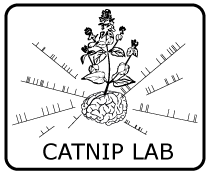History-dependent variability in population dynamics during evidence accumulation in cortex (2016)
-
Paper Ari S Morcos, Christopher D Harvery, History-dependent variability in population dynamics during evidence accumulation in cortex, Nat. Neuroscience 19, 1672-1681 (2016)
-
Abstract
We studied how the posterior parietal cortex combines new information with ongoing activity dynamics as mice accumulate evidence during a virtual navigation task. Using new methods to analyze population activity on single trials, we found that activity transitioned rapidly between different sets of active neurons. Each event in a trial, whether an evidence cue or a behavioral choice, caused seconds-long modifications to the probabilities that govern how one activity pattern transitions to the next, forming a short-term memory. A sequence of evidence cues triggered a chain of these modifications resulting in a signal for accumulated evidence. Multiple distinguishable activity patterns were possible for the same accumulated evidence because representations of ongoing events were influenced by previous within- and across-trial events. Therefore, evidence accumulation need not require the explicit competition between groups of neurons, as in winner-take-all models, but could instead emerge implicitly from general dynamical properties that instantiate short-term memory.
